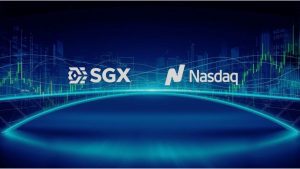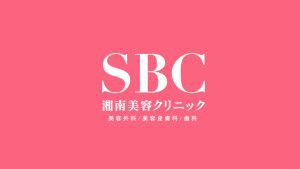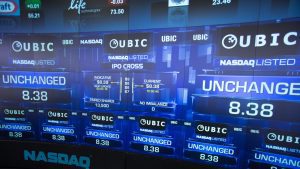The Case of BitMine and the Path from OTC to Exchange Listing
In June 2025, BitMine Immersion Technologies, Inc. (“BitMine”), which had previously traded on the OTCQX market, successfully uplisted to the NYSE American. BitMine, having commenced trading on the OTCQX Best Market on September 28, 2023, began trading on the NYSE American under the ticker “BMNR” on June 5, 2025. Concurrently, the company raised approximately $18 million through a public offering of 2.25 million shares at $8.00 per share.
Reviewing BitMine’s history, the company was established in Nevada in 1995 as Interactive Lighting Showrooms, Inc. It subsequently underwent multiple business transformations and name changes, including Am/Tex Oil and Gas, Inc. (2004), Critical Point Resources, Inc. (2008), and Renewable Energy Solution Systems, Inc. (2012). In 2022, it adopted its current name and pivoted its business to utilizing immersion cooling technology for Bitcoin hosting and mining. After a history spanning approximately 30 years and numerous pivots, the company has finally achieved a listing on a major U.S. exchange.
The Background for the Increase in Uplisting
Such transitions from OTC markets have clearly increased since 2020. The underlying factors include:
- The reaction after the SPAC boom (2020–2022): As SPAC listings became more difficult, an increasing number of companies sought uplisting as an alternative route.
- Strengthening of the OTC’s positioning: The OTC Markets Group enhanced its disclosure rules (such as amendments to Rule 15c2-11), increasing the credibility of the OTCQX and OTCQB markets.
- Changes in capital raising strategies: A pathway has become common where companies first build an investor base and track record on the OTC, and subsequently proceed with a large-scale public offering upon listing on Nasdaq or the NYSE.
Indeed, 2025 has seen a succession of uplistings, including Solésence, Inc. (OTCQB to Nasdaq, April), Tecogen Inc. (OTCQX to NYSE American, May), and iQSTEL Inc. (OTCQX to Nasdaq, May). In recent years, several dozen companies annually have achieved similar transitions, indicating that the strategy of using the OTC market as a launchpad is becoming established.
The Structure of the OTC Market
The OTC (Over-the-Counter) market is not an “organized securities exchange” like the NYSE or Nasdaq, but rather a market where securities are traded directly between counterparties through securities dealers and market makers. In the United States, OTC Markets Group Inc. (formerly Pink Sheets LLC) provides the main platform. Registration requires a market maker to file Form 211 with FINRA and obtain approval.
The OTC Markets Group classifies markets into three tiers based on the level of information disclosure:
- OTCQX (Best Market): The top tier. It requires stringent financial standards, disclosure, and auditing. Prominent international companies are also registered here. In 2024, Japan’s Metaplanet, Inc. registering on the OTCQX became a topic of discussion.
- OTCQB (Venture Market): For growth companies. It requires audited financial statements, but the standards are less stringent than OTCQX.
- Pink Market (Open Market): Formerly known as “Pink Sheets.” This market has the most lenient regulations, and labels such as “Current,” “Limited,” or “No Information” are assigned based on the status of information disclosure.
OTC and Capital Raising
The OTC market is strictly a secondary market; registration on the OTC alone does not enable a company to issue new shares to raise capital. Only previously issued shares are traded on the OTC. Therefore, while it is effective for cash-rich companies prioritizing an exit for existing shareholders, achieving a listing on a major exchange or utilizing other mechanisms is necessary to obtain growth capital.
Regulation A+ (Reg A+)
An exception to this is Regulation A+, often called a “Mini-IPO.” This system allows for small-scale public offerings through a simplified registration with the SEC (Form 1-A).
- Tier 1: Up to $20 million annually. Requires approval from state securities regulators. Rarely used.
- Tier 2: Up to $75 million annually. Exempt from state regulations. Audited financial statements are mandatory. Requires annual reports (Form 1-K), semi-annual reports (Form 1-SA), and current reports (Form 1-U).
While Tier 2 procedures are similar to a conventional IPO, an S-1 registration is not required, nor is compliance with internal controls (SOX 404(b)). Although costs are significantly reduced, the investor base and liquidity are limited.
Other Frameworks
- Regulation D: Private placements to accredited investors (PIPE transactions are typical).
- Regulation S: Offerings to investors outside the U.S.
- Public offering via S-1 Registration: While feasible for OTC companies, this is usually executed in conjunction with an uplisting to an exchange.
Future Outlook
Historically, the OTC market was regarded as a venue for penny stocks with poor disclosure, and transitions from it to major exchanges were rare. However, due to recent environmental changes, uplisting has gained mainstream acceptance. These changes include:
- Stricter SPAC regulations making direct IPOs difficult.
- Building a track record on the OTC being valued as a preliminary step for an exchange listing.
- The availability of flexible financing systems such as Reg A+.
Major Japanese corporations (e.g., TDK, Hitachi, Nintendo via ADRs) are already registered on the OTC. Moving forward, it is possible that the OTC market will gain wider recognition among Japanese startups as a strategic option.
Conclusion
Our firm provides support for U.S. listings, including Nasdaq, for Japanese companies. If this article has piqued your interest and you wish to learn more, please do not hesitate to contact us. We look forward to the opportunity to speak with you—those who are driving forward today with an eye toward the future—and to offer our support where we can be of assistance. For inquiries, please feel free to reach out to us using the contact form below.










